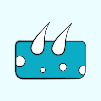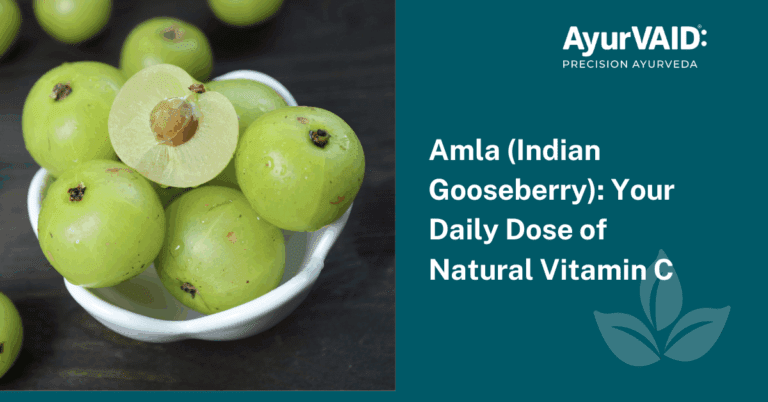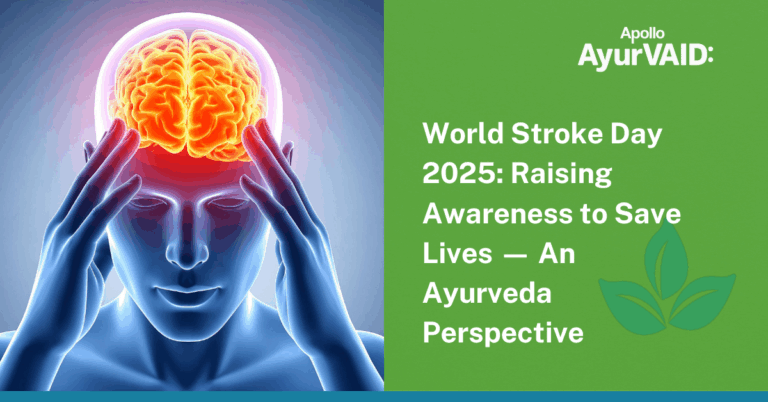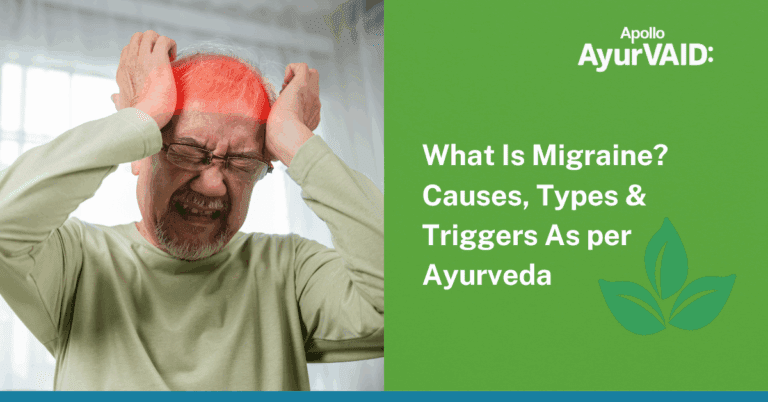Pain in the knee joint is a frequent condition, especially in the older age group, which affects the quality of life as well as activities of daily living. It is a condition frequently associated with the natural degeneration due to the aging process. It can happen due to osteoarthritis, rheumatoid arthritis or due to any other structural deformity of the knee.
Ayurveda has provided age-old wisdom regarding the knee joint pain causes, natural relief, and comprehensive measures to regain joint function. If you’re searching for how to reduce knee joint pain, this extensive blog will lead you through contemporary facts supported by Ayurveda’s laws. We’ll emphasise key terms such as knee joint pain causes, oil for knee joint pain, and knee pain treatment in Ayurveda throughout this blog.
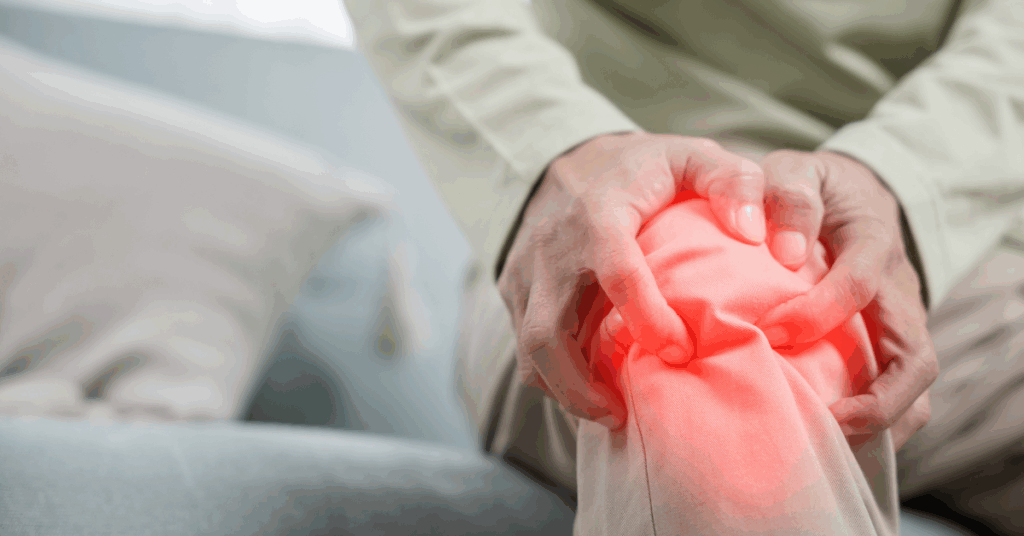
Interpreting Knee Joint Pain Causes from an Ayurvedic Point of View
Knee joint pain etiology can be associated with a number of factors, and Osteoarthritis (OA) is the most common condition in the elderly.
OA is the degenerative wear and tear of cartilage and joint components over time, usually compounded by previous injuries, overuse, or misuse.
Other etiologies include inflammatory disorders such as Rheumatoid Arthritis (RA), post-traumatic arthropathy, gout, infection, bursitis, tendonitis, ligament sprain, meniscus tears, and even bone tumors.
External causes like overworking, repetitive strain, ill-fitting shoes, obesity, poor body alignment, metabolic diseases, and vascular conditions may also play a role.
Ayurveda, referred to as Sandhigata Vata, considers knee joint pain as a consequence of an aggravated Vata dosha. Vata, which controls motion in the body, when out of balance, causes dryness, less lubrication, and degeneration of the knee joints.
It presents as pain, swelling, and limited motion.
Decreased musculoskeletal integrity and degenerative changes related to aging are thoroughly assessed in geriatric patients.
Cold and dry weather, as well as winter, can especially exacerbate Vata and Kapha doshas, increasing joint rigidity, pain, and decreasing flexibility and circulation to the knee region.
In addition, weakened digestion, which leads to toxic buildup (Ama), can influence joint health.
Knee Pain Treatment in Ayurveda
The most important knee pain treatment in Ayurveda is:
- Herbal Preparations: Ayurveda pharmacology provides internal drugs with anti-inflammatory and analgesic actions. These preparations are indicated to treat Vata dosha and encourage joint health by impacting the cause.
- External Treatments: Local external treatments play a vital role in mitigating inflammation, improving joint lubrication, and restoring mobility. These consist of
- Abhyanga (Oil therapy): Involves the use of medicated oils, warmed for applying to relieve pain and dryness, particularly helpful during winter. It feeds tissues and enhances blood flow.
- Swedana (Sudation): Induces sweating to relieve stiffness and joint pain. Treatments such as Patra Pinda Sweda (fomentation with herbal bolus) and Churna Pinda Sweda (powder massage with medication) are adopted.
- Dhara (Streaming Warm Liquid): Includes pouring warm herbal decoction or oil for knee joint pain over the affected knee, which relieves stiffness and pain.
- Lepa (Medicated Paste Application): Using herbal pastes on the knee can diminish inflammatory symptoms such as swelling and redness.
- Pichu (Oil-Soaked Cotton Pad): Includes putting an oil for knee joint pain-soaked cotton pad on the knee to tighten the joint.
- Janu Vasti (Medicated Oil Pooling): This therapeutic technique is used to hold warm medicated oil for knee joint pain near the knee joint in a dough dam. It gives nutrition, calms Vata dosha, and strengthens the nearby muscles, ligaments, and tendons, which prevent further degeneration.
- Panchakarma Procedures: In cases where the condition is more serious or requires deeper cleansing, Panchakarma treatments are advised to remove the toxins and reestablish balanced doshas that have become vitiated.
- Virechana (Purgation): Removes toxins and normalizes vitiated doshas, most useful if knee pain occurs with swelling and redness.
- Vasti (Enema): Highly effective in treating Vata vitiation, Vasti treatments (such as Matra Basti or Yoga Vasti) eliminate toxins from the body and re-establish dosha equilibrium. They also provide nourishment to the joints and adjacent tissues, enhancing bone and bone marrow power.
- Agnikarma (Therapeutic Cauterisation) and Jalaukavacharana (Leech Therapy): Para-surgical treatment, these procedures can treat pain, stiffness, swelling, crepitus, and tenderness in Sandhivata (OA) effectively, and are safe when used by skilled practitioners.
How to Reduce Knee Joint Pain: Lifestyle and Dietary Adjustments
Ayurveda focuses on lifestyle and dietary changes to alleviate pain in the knee joint and promote joint health.
A balancing diet of Vata and Kapha is advised, excluding cold foods, fermented foods, dry meats, and salty or spicy foods.
Light and warm foods such as vegetable soups and khichdi are suitable.
Turmeric, ginger, cumin, pepper, and garlic, as well as healthy fats, are useful for strengthening and have anti-inflammatory properties.
Avoid excess potatoes, night curd, jamun, or beans.
Lifestyle changes involve remaining active with light physical exercises, weight control, warming up joints, stress minimization through Pranayama and meditation, and refraining from sitting for long periods to prevent increased stiffness.
Routine exercise, weight control, and adequate covering of joints can keep the joints healthy and comfortable.
Osteoarthritis knee – treatment in Ayurveda goes beyond merely alleviating symptoms; it targets the root cause to reverse disease pathogenesis and improve overall vitality. For severe cases of OA where surgical interventions like Total Knee Replacement (TKR) are typically reserved, Ayurveda aims to prevent the need for such invasive procedures.
Ayurveda emphasises tissue nourishment and protection of the surrounding muscles and tissues. It cannot “cure” chronic degenerative conditions like OA entirely, but it relieves the symptoms and improves the quality of life significantly.
Scientific Validation and Results
Patient Name: Ms. MDT
Age: 65 years
Diagnosis: Advanced Osteoarthritis – Left knee
Moderate Osteoarthritis – Right knee
The patient was in a chronic degenerative phase with limited movement and decreased ability to carry out everyday activities without assistance.
Chief Complaints:
Severe pain in the left knee
Swelling, stiffness, and decreased movement for more than 1 year
Inability to carry out daily activities without assistance
Case Summary
The patient had chronic knee pain and functional limitations as a result of advanced osteoarthritis, particularly of the left knee. Ayurveda management targeted the correction of Vata aggravation and dhatu kshaya by deepana, pachana, snehana, swedana, virechana, Vasti, and local therapies such as choorna pinda sweda, dhanyamla dhara, and janu basti.
Improvement highlights after 17 days of inpatient treatment:
WOMAC score decreased from 65.62 to 39.5
KOOS total score improved from 32% to 53%
Key Outcomes:
| Parameter | Before Treatment | After Treatment |
|---|---|---|
| Knee Pain | Severe (VAS 5/10) | Good improvement (VAS 1/10) |
| Swelling (Left knee) | Significant (++ swelling) | Absent (–) |
| Range of Motion (ROM) | Painful at 40° flexion | Pain only at complete flexion |
| Appetite | Reduced | Good |
| Bowel | Incomplete | Clear and regular |
| Sleep | Fair | Sound |
| Stress | Moderate | Low |
The patient experienced substantial relief in symptoms, improved mobility, and better quality of life at discharge.
NOTE: KOOS Score: The score is a percentage score from 0 to 100, 0 representing extreme problems and 100 representing no problems.
WOMAC Score: Scores range from 0 to 96 for the total WOMAC, where 0 represents the best health status and 96 the worst possible status. The higher the score, the poorer the function.
Conclusion

References
Kessler CS, Dhiman KS, Kumar A, Ostermann T, Gupta S, Morandi A, et al. Effectiveness of an Ayurveda treatment approach in knee osteoarthritis – a randomised controlled trial. Osteoarthritis Cartilage. 2018 May;26(5):620-630.
Chiluveri AC, Chiluveri SK, Patil R. Ayurvedic Management of Osteoarthritis Knee with Grade IV Severity and Obesity (Avaranajanya Janu-Sandhigatavata with Sthoulya). J Res Ayurvedic Sci. 2018;2(4):240-246.
Arya R, Ghoshal S, Pal K, Mangal G, Dutta A. A Systematic Review on Panchakarma-Based Ayurveda Treatment in Janu Sandhigata Vata. Int J Ayurvedic Med. 2023;14(1):29-41.
Seetha M, Jain J. Knee Osteoarthritis Management through Ayurveda: A Case Report. Sch Int J Tradit Complement Med. 2019 Jun 30;2(4):59-62.
Kessler CS, Pinders L, Michalsen A, Cramer H. Ayurvedic interventions for osteoarthritis: a systematic review and meta-analysis. Rheumatol Int. 2015 Feb;35(2):211-232.
Sagar S, dudhamal TS. Systematic Review on the Management of Sandhivata vis-a-vis Osteoarthritis through Para Surgical Procedures in Ayurveda w.s.r. to Agnikarma and Jalaukavacharan/ Leech Therapy: A Review. J Ayurveda Campus. 2022 Oct;3(1):69-80.## Reclaiming Mobility: A Holistic Ayurvedic Approach to Knee Joint Pain


